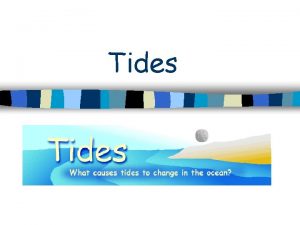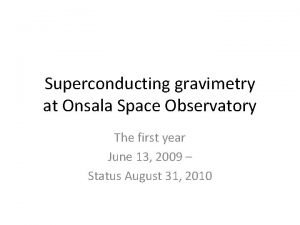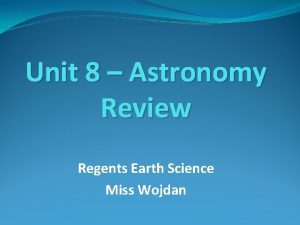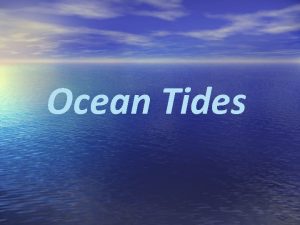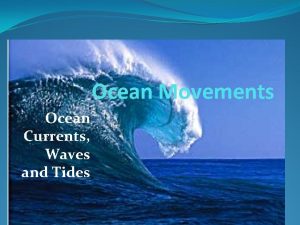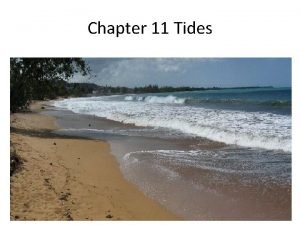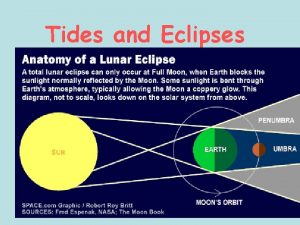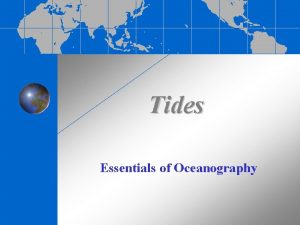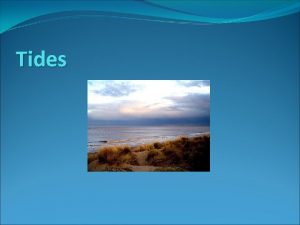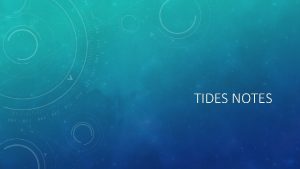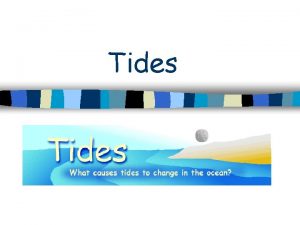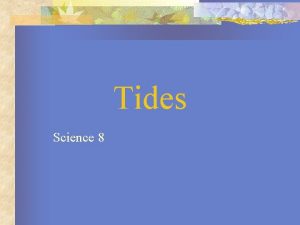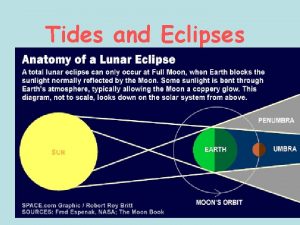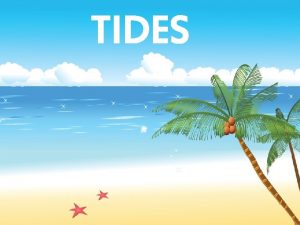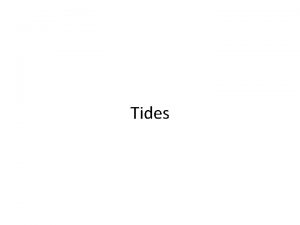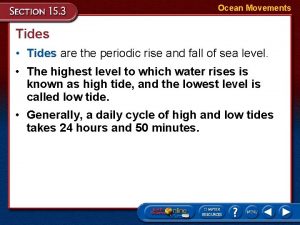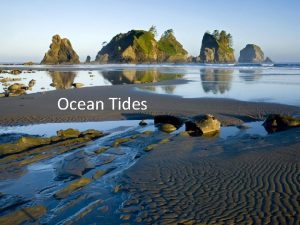Tides Tides Are the Longest of All Ocean










































- Slides: 42

Tides

Tides Are the Longest of All Ocean Waves • Tides are periodic, short-term changes in the height of the ocean surface at a particular place, • Caused by a combination of the gravitational force of the moon and sun and the motion of Earth. • With a wavelength that can equal half of Earth’s circumference, tides are the longest of all waves.

Tides สามารถแบงออกเปน • Astronomical Tides - Tides caused by inertia and the gravitational force of the sun and moon • Meteorological Tides - Storms can affect tide height —a phenomenon known as a meteorological tide. • เราจะเนนความสนใจไปท Astronomical Tides


• The energy is a result of the gravitational pull of the moon and sun and the rotations of the earth, moon, and sun; • These rotations produce a centrifugal force which balances the gravitational forces, • so that the planets do not fly away from or crash into each other

• Tides are cyclical, but they do not come and go at the same times each day, and the height to which the water rises or recedes varies from day to day. • We must first learn some basic information about gravity and the motions of the moon around the Earth around the sun.




Newton’s law of gravitation




Lunar Day






รปแบบการเกดนำขนนำลง • diurnal tides (daily tides) หรอ นำเดยว have one high tide and one low tide in each tidal day • semidiurnal tides (semidaily tides) หรอ นำค have two hi and two low tides each tidal day thus a period of 12 hrs and 24. 5 minutes; the tides are equal in height during each period • mixed tides หรอ นำผสม have two high tides and two low tides each tidal day, but the heights of the two high tides/low tides are not equal -- there is a higher high tide, a lower high tide, a higher low tide and a lower low tide









• The moon's orbit is not in the plane of the earth's equator but is inclined at an angle of 28° on either side of the equator • The angle between the equatorial plane and the moon varies over a period of 27. 2 from this maximum of 28° to 0° and back to 28°







• the rotation of the earth on its axis is too rapid for the inertia of the water masses to be overcome in sufficient time to establish an equilibrium tide; thus there is a time lag in the ocean's response to the tractive forces • lateral water movements induced by tide generating forces are subject to the Coriolis force which deflects tidal flows with the sun (to the right in the Northern Hemisphere; to the left in the Southern Hemisphere)





• the tides produced by both are added together; these tides have the greatest range between high and low water -- these are called spring tides and occur when the sun and moon are in conjunction (new moon) or in opposition (full moon); the moon is in syzygy here • 7. 38 days after the full or new moon, the moon, earth, and sun are aligned at right angles (moon's first and third quarters) • the crests produced by the moon's tide will coincide with the troughs produced by the sun's tide; these will cancel each other and the range between high and low water will be low; these are the neap tides and occur when the moon is in quadrature • the cycle of solar and lunar tides is 29. 5 days (7. 38 days * 4)

Energy from Tides
 Insidan region jh
Insidan region jh The difference between spring tides and neap tides
The difference between spring tides and neap tides Compare and contrast spring and neap tides.
Compare and contrast spring and neap tides. Ocean currents waves and tides
Ocean currents waves and tides Gravimeter
Gravimeter Ocean tides observed at coastal locations
Ocean tides observed at coastal locations Ocean ocean convergent boundary
Ocean ocean convergent boundary Sciencechannel.com/activate
Sciencechannel.com/activate Convergent boundary
Convergent boundary Ocean to ocean convergent boundary
Ocean to ocean convergent boundary Ocean ocean convergent boundary
Ocean ocean convergent boundary Red ocean blue ocean strategi
Red ocean blue ocean strategi Convergent continental continental features
Convergent continental continental features Chapter 15 ocean water and ocean life answer key
Chapter 15 ocean water and ocean life answer key Name all rays
Name all rays Biện pháp chống mỏi cơ
Biện pháp chống mỏi cơ Trời xanh đây là của chúng ta thể thơ
Trời xanh đây là của chúng ta thể thơ Voi kéo gỗ như thế nào
Voi kéo gỗ như thế nào Thiếu nhi thế giới liên hoan
Thiếu nhi thế giới liên hoan Fecboak
Fecboak Một số thể thơ truyền thống
Một số thể thơ truyền thống Thế nào là hệ số cao nhất
Thế nào là hệ số cao nhất Sơ đồ cơ thể người
Sơ đồ cơ thể người Ng-html
Ng-html Số nguyên tố là gì
Số nguyên tố là gì Tư thế ngồi viết
Tư thế ngồi viết đặc điểm cơ thể của người tối cổ
đặc điểm cơ thể của người tối cổ Cách giải mật thư tọa độ
Cách giải mật thư tọa độ Các châu lục và đại dương trên thế giới
Các châu lục và đại dương trên thế giới Tư thế worm breton
Tư thế worm breton ưu thế lai là gì
ưu thế lai là gì Thẻ vin
Thẻ vin Cái miệng bé xinh thế chỉ nói điều hay thôi
Cái miệng bé xinh thế chỉ nói điều hay thôi Các châu lục và đại dương trên thế giới
Các châu lục và đại dương trên thế giới Bổ thể
Bổ thể Từ ngữ thể hiện lòng nhân hậu
Từ ngữ thể hiện lòng nhân hậu Tư thế ngồi viết
Tư thế ngồi viết Thế nào là giọng cùng tên
Thế nào là giọng cùng tên Làm thế nào để 102-1=99
Làm thế nào để 102-1=99 Thể thơ truyền thống
Thể thơ truyền thống Chúa sống lại
Chúa sống lại Khi nào hổ mẹ dạy hổ con săn mồi
Khi nào hổ mẹ dạy hổ con săn mồi đại từ thay thế
đại từ thay thế

